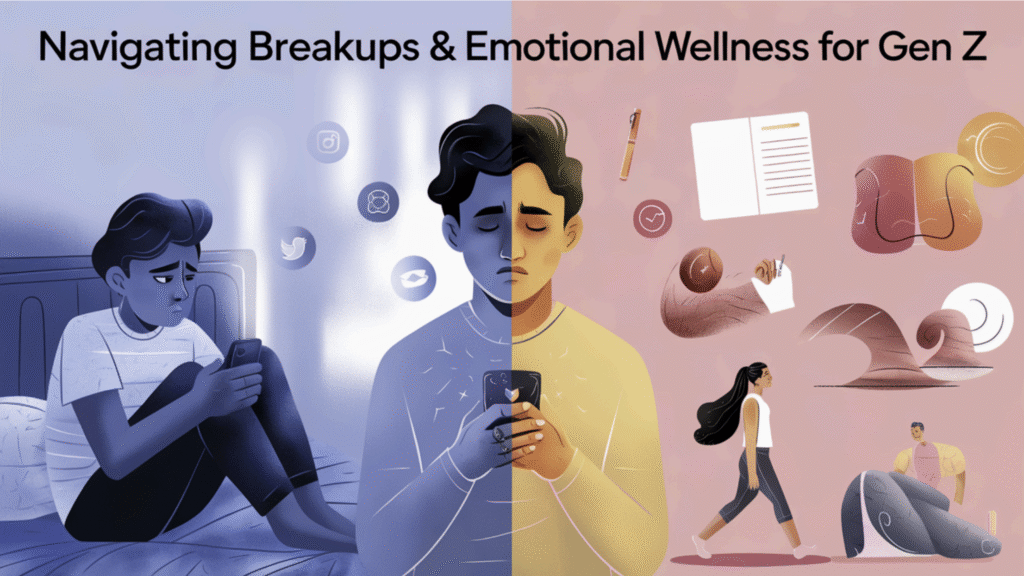Navigating Breakups and Emotional Wellness for Gen Z – Coping, Growth, and Healing
Introduction Breakups can be a deeply emotional and challenging experience, especially for Gen Z, who are navigating relationships in an era dominated by digital connections, social media, and shifting societal expectations. Recent studies show that 87% of Gen Z cite relationships as their biggest source of stress, with one in three reporting a significant impact on their mental health after a breakup. For many young people in India and around the world, healing from heartbreak means more than just moving on—it involves understanding their emotions, building resilience, and learning how to foster healthier relationships in the future. Mind Spa India is here to offer compassionate guidance and practical strategies tailored to the unique challenges faced by Gen Z, helping transform heartbreak into an opportunity for growth. The Emotional Impact of Breakups on Gen Z Breakups can trigger a spectrum of intense emotions—sadness, anger, confusion, self-doubt, and anxiety. These feelings are often compounded by: Coping Strategies for Gen Z Breakups 1. Understanding and Processing Emotions Avoiding or suppressing feelings can make recovery harder. Healthy coping involves acknowledging emotions without judgment: 2. Positive Attitude and Problem Solving Research highlights that maintaining a positive attitude and engaging in problem-solving can promote emotional resilience and improve social and academic functioning after breakups. 3. Seek Social Support Lean on trusted friends, family, or support groups. Sharing feelings openly can promote healing and reduce feelings of isolation. 4. Digital Detox and Healthy Social Media Use Taking meaningful breaks from social media or limiting exposure to triggering content can reduce anxiety and rumination. 5. Professional Help If emotions become overwhelming or symptoms persist, professional counseling offers structured support. Unique Challenges for Gen Z in India The Indian Gen Z population faces additional cultural and social layers: Mind Spa India offers culturally sensitive therapy acknowledging these complexities and providing safe spaces for open conversations. FAQs Q: How can I manage anxiety after a breakup?A: Start with grounding techniques like deep breathing and 5-4-3-2-1 sensory exercises. Prioritize sleep, nutrition, and physical activity. Reach out to friends or professionals when needed. Therapy can provide ongoing support. Q: Is it normal to feel angry or avoidant after breakups?A: Yes, anger and avoidance are common reactions. However, prolonged avoidance can hinder healing. Finding ways to gradually process emotions in therapy or supportive settings promotes recovery. Q: How do social media affect breakup recovery?A: Constant exposure to an ex-partner’s life can prolong emotional distress. Taking breaks from social media and managing digital interactions positively impacts mental health. Conclusion & Call to Action Breakups are never easy, especially in today’s fast-paced, socially connected world. But with the right approach, Gen Z can navigate heartbreak with resilience and self-compassion. Mind Spa India combines evidence-based psychological support with an understanding of young adults’ unique social and digital realities to help you heal, grow, and build fulfilling relationships ahead. 📞 For support tailored to your journey, call or WhatsApp Mind Spa India at +91 8840676202.Embrace your healing journey today—with Mind Spa India as your trusted partner.

